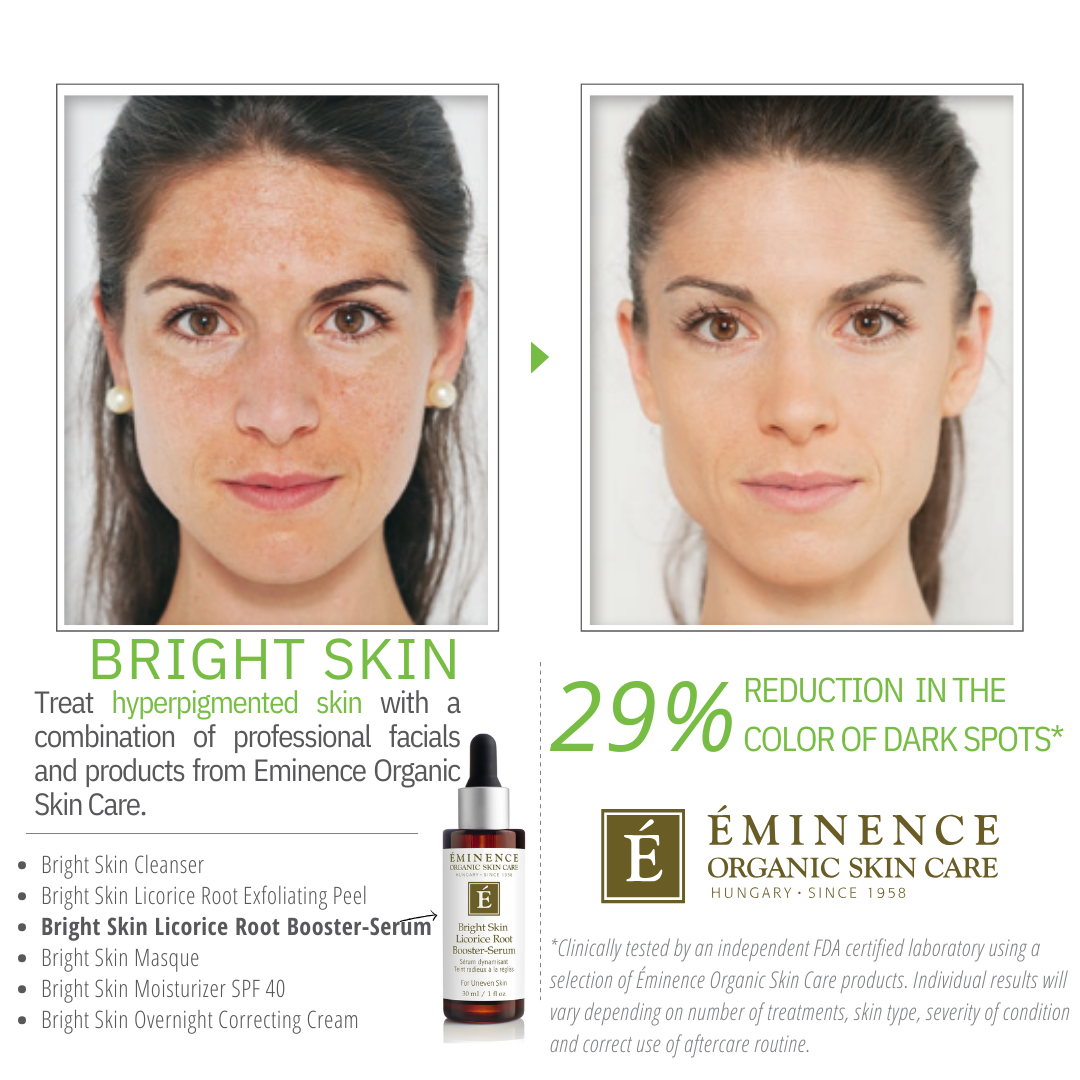Determine Your Skin Concerns & Conditions
A skin concern or condition is different from a skin type in that it is not genetic and can be improved with proper skin care. Often, symptoms are caused by external factors such as climate changes, lifestyle and environmental stressors. Skin concerns and conditions can be troublesome, but the correct treatments with active herbal ingredients can produce great results.
Acne/Breakout Prone
As many as 80% of people will have acne at some point during their lifetime. This condition can affect skin at any age, from adolescent to adult, and every skin type. Acne is caused by a number of factors, including pore congestion, excess oil production, hormonal fluctuations, bacteria and genetics. Luckily, it can be alleviated over time with results-driven skin care that keeps skin clear and healthy.
Salicylic acid and clay are two of the best ingredients to treat acne-prone skin and prevent future breakouts. Salicylic acid is a beta hydroxy acid that penetrates deep into pores to clear blockages and neutralize acne-causing bacteria. Clay works like a magnet, using its negatively charged particles to pull positively charged impurities from pores and the skin’s surface.
Redness and Rosacea
Rosacea usually a genetic condition that can cause redness and inflammation around the nose, forehead, cheekbone, and chin. Rosacea is sometimes mistaken for an allergic reaction or acne since small red bumps may also appear. Avoiding very hot temperatures and use products designed to help calm the skin and reduce redness. Your physician can help create a skin care routine specifically tailored toward your needs.
Large Pores
Large pores are one of the most common skin concerns. While pore size is mostly determined by genetics, dead skin cell buildup, loss of elasticity and excess oil production can cause them to get larger. Large pores are typical with oily and combination skin types, which have over-productive sebaceous glands.
Regular cleansing and gentle exfoliation are important for improving large pores. These steps remove sebum from the skin’s surface and alleviate pore congestion, so pores can shrink to their normal size. Clay and charcoal masks produce a soothing astringent action that shrinks and minimizes pore openings.
Signs of Aging
The prevalent signs of aging include fine lines, wrinkles and sagging skin, each of which is the result of the body’s aging processes. Over time, production of hyaluronic acid, collagen and elastin slow down, causing skin to lose volume, density and elasticity. This natural depletion accounts for only ten percent of skin aging; the remaining ninety percent is caused by long-term exposure to free radicals. These cause oxidative stress that damages skin cells and speed up the aging process.
While an aging complexion is unavoidable, visible effects can be reduced with a targeted skin care routine. Since aging skin also tends to be dry, follow a dry skin care routine with a few changes. Add a serum, oil or concentrate that contains botanical peptides, hyaluronic acid and natural retinol alternatives to help plump, lift and firm skin. Antioxidant-rich products will provide additional benefits by shielding skin and decreasing the damage done by environmental stress and free radicals.
Lack of Firmness
A major side effect of the skin’s aging process is loss of firmness. As the skin ages, the muscles in your face can lose their tone and elasticity. Muscle fibers and elastin begin to lengthen causing skin to sag. With strength and elasticity lacking, your skin loses the ability to bounce back. The result is drooping of the eyebrows and eyelids as well as looseness and fullness (jowls) under the cheeks and jaw.
Lack of firmness can be lessened with a targeted skin care routine that targets skin tightness and elasticity. Add face masks and moisturizers that contain natural firming agents like bamboo. Facial massage techniques can also be helpful in toning the muscles beneath the skin, keeping them strong and firm.
Hyperpigmentation
Hyperpigmentation is a leading skin concern and is defined by the appearance of dark spots, freckles, scarring or an uneven skin tone. This condition is caused by an increase in melanin production by the skin’s melanocytes, caused by a number of factors including sun exposure, stress, aging, hormonal changes and post-inflammatory pigmentation. Hyperpigmentation can appear on any skin type and widely varies in its severity.
This is one of the most difficult skin conditions to treat and requires dedication and consistency with a targeted skin care routine. Choose products that contain stone crop and natural hydroquinone alternatives as well as licorice root, willow bark, arbutin and zinc hyaluronate to improve the look of dark spots.
Watch the video below for more tips to diminish dark spots.
Sun Damage
UV ray exposure can cause both temporary and long-term damage to the skin. One of the most common conditions as a result of sun exposure is immediate dehydration and painful, itchy redness—otherwise known as sunburn. Accumulated exposure can permanently stretch small blood vessels, leading to a red and blotchy complexion. To improve and prevent the negative effects of sun exposure, keep skin protected and hydrated all year. Apply an SPF moisturizer or mineral powder sunscreen daily and protect your body from head-to-toe with natural sunscreens. If you have been overly exposed to UV rays, restore lost moisture with rich, hydrating balms and body lotions.








